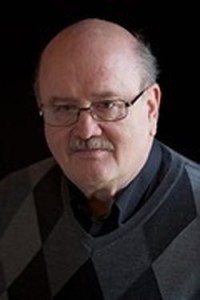 2015 marked my eleventh year as a professional writer. 2004 was when I first began getting paid for my writing. But like all writers I know, I’m continuing to grow in both my command of my craft and in my understanding of it. And this year I gained an understanding of how my writing process works that I hadn’t had before.
2015 marked my eleventh year as a professional writer. 2004 was when I first began getting paid for my writing. But like all writers I know, I’m continuing to grow in both my command of my craft and in my understanding of it. And this year I gained an understanding of how my writing process works that I hadn’t had before.
True confession time: I’m a seat of the pants writer/pantser/ organic writer. One of those writers who doesn’t draw up a written outline for writing anything, even lengthy novels.
I find that a lot of readers don’t understand what the seat of the pants approach is all about. Since it’s usually contrasted with the outlining approach, many just assume that the seat of the pants approach means just throwing words together almost at random, much as a painter might throw splatters of paint at a canvas, in the hopes that he or she will end up with a story instead of a mess. Nothing could be farther from the truth.
The fact is, seat of the pants writers do outline. They just outline in a very different method than organized outliners do. And I knew this. I just couldn’t articulate it very well. Then I listened to a two-part interview with authors Lois McMaster Bujold, Wen Spencer, and Brendan DuBois on the Baen Free Radio Hour podcast (September 11 and September 15 2015 episodes) on the subject of creativity. Listening to those fine authors discuss the subject caused my understanding of my own creative process to come into focus, and it definitely helped me shape what follows.
Keeping in mind that there is no one right way to write—they’re all good as long as they produce good stories and novels—I’m going to give you a look at how I approach working a writing project.
Just about all writers I know will admit to having some sort of internal guide for how they approach the craft. Depending on who you talk to, it might be referred to as “the muse”, or “the back of the brain”, or “the writer sense”, or “the unconscious mind”, or “the writer perception”. I’m sure there are other labels out there, but those are the ones I’ve heard the most. Personally, since I tend to personify things, I refer to it as “the muse”. (Don’t ask me what I call my laptop sometimes.) I’ll carry that phrase forward now.
The first thing that the muse brings to me is the main character, or sometimes the main character set. I’m not going to call my writing “character driven”, but every story I’ve written, no matter the length, began with the characters arriving in my mind. Then I spend some time, anywhere from a couple of hours to a couple of weeks musing on the characters. (Pun intentional.) This is who the story is about.
The next thing the muse delivers is the situation/problem/conflict that is going to be the driving force behind the story. And I spend some time meditating on that, on the ins and outs of the issues, and how they will impact the characters and the story. The situation also usually defines where the story is going to start. This is what the story is about.
Mind you, this kind of thinking is not done in dedicated blocks of time, but rather is tucked away in the back of the mind to kind of roll around while I’m at the day job or doing family stuff. Every once in a while a thought will rise to the top and I’ll go, “Okay, that’s cool,” and add it to the mental file I’m building about the work.
The last major piece that the muse delivers is the ending. This is critical to me in how I work: I can’t start writing until I know how the story will end. This is where the story is going to go.
If the story is a shorter work, that’s all I need to get started. If it’s headed for novella or novel length, I may have identified a milestone or two that I want to include in the path of the story. But characters, situation, and ending—the who, what, and where—always delivered in that sequence—are the pieces I personally have to have in order to begin writing.
So far, the process probably isn’t very different from how outlining writers work. Things diverge now, though.
Let’s use the metaphor of driving from Cincinnati, Ohio, to Miami, Florida.
The outlining writer will plot a course from Cincinnati, identifying the exact roads to be taken, the places to change from one road to another, where to stop for the night, and perhaps even where to stop for meals. And the story that will be written from that outline will flow in exactly that manner.
I, on the other hand, being the enterprising seat of the pants writer, simply begin writing. I don’t have an outline on paper, but I do have the bones of an outline in my mind—beginning, milestones, and ending—and a destination fixed in place. At this point, my muse begins operating like a good GPS. She (I told you I personify things) points me in the direction of the goal and kicks me into gear and I head off down the highway toward Miami. But somewhere along the way, I decide to take an exit and go see what’s happening over near some little village. And my muse, like any good GPS, recalculates while I’m checking out what I wanted to see, and rather than try to take me back the way I came, tells me the new direction I need to go to get back on track and get to Miami. And no matter how many diversions I make, how many bakeries and amusement parks and historical sites I go see, nothing gets outside the reach of my muse/GPS, and she will infallibly deliver me to Miami and the conclusion of my project.
So the outlining writer and I, we both arrive at Miami; he by way of his carefully plotted out roadmap/outline, and I by way of my muse/GPS. Yes, the roads thus traveled are different, and the sights seen and described are very different, but in both projects we arrived at the end.
As a seat of the pants writer, it’s not true that I don’t have an outline. I do have an outline; it’s just the barest hint of an outline residing between my ears, but when matched up with my-muse-the-writerly-GPS, it gets me to the end of the story.
So I think I’m going to quit calling myself a seat of the pants writer, and instead start calling myself a GPS writer. What do you think?
 David Carrico Bio:
David Carrico Bio: David Carrico has been an avid science-fiction and fantasy reader since January 1963, when he encountered a copy of Andre Norton’s novel Catseye. He started writing (mumbledy) years ago, but has been selling professionally since 2004. Most of his work is alternate history. His first book, an e-book entitled 1635: Music and Murder, was published by Baen Books in September, 2013. It’s a collection of two different groups of stories which collectively provide the backstory for his second book, 1636: The Devil’s Opera, a novel published by Baen Books in October, 2013, in both paper and e-book formats. Both books are laid in Eric Flint’s Ring of Fire alternate history universe, and the novel was co-written with Eric.
David is married, has three kids, five grandkids, two great-grandkids, and usually has at least a couple of Basset hounds lazing around the house somewhere.
